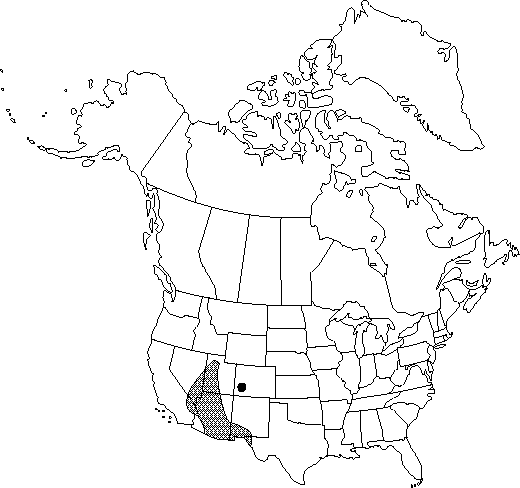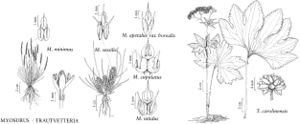Myosurus cupulatus
Proc. Amer. Acad. Arts 17: 362. 1882.
Herbs, 3.3-16 cm. Leaf blades linear or very narrowly oblanceolate, 1.8-9.5 cm. Inflorescences: scapes 2.2-12 cm. Flowers: sepals faintly 3-veined, scarious margins narrow or absent; petal claw 1-3 times as long as blade. Heads of achenes 13-42 × 2-3 mm, long-exserted from leaves. Achenes: outer face orbiculate or sometimes square, 0.8-1.2 × 0.6-1 mm, 0.8-1.2 times as high as wide, bordered by prominent ridge; beak 0.6-1.2 mm, 0.6-1.2 times as long as body of achene body, weakly divergent from outer face of achene, heads of achenes thus roughened by projecting achene beaks. 2n=16.
Phenology: Flowering late winter–spring (Mar–May).
Habitat: Dry hillsides or canyon bottoms in shrubland
Elevation: 350-1800 m
Distribution

Ariz., Calif., Colo., Nev., N.Mex., Tex., Utah, Mexico (Baja California and Sonora).
Discussion
The Navaho-Ramah used Myosurus cupulatus medicinally both externally and internally as an aid for ant bites or swallowing an ant (D.E. Moerman 1986).
Selected References
None.
